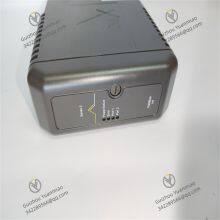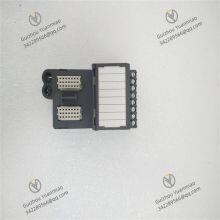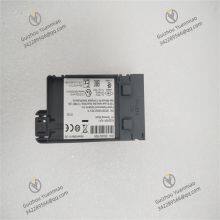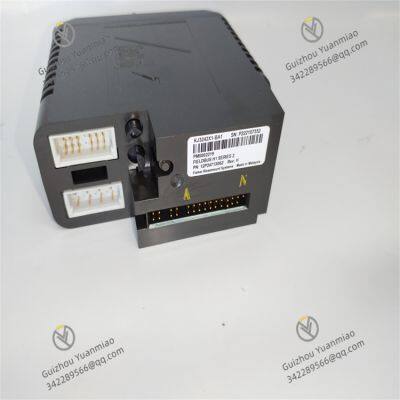Material
Other, Global universal model
Condition
Other, Global universal model
Task
Other, Global universal model
Mathematical Model
Other, Global universal model
Signal
Other, Global universal model
Customized
Non-Customized
Structure
Other, Global universal model
Operating temperature
-40°C to 70°C
Output voltage
24V DC
Dimensions
140mm×100mm×25mm
I. Overview
VE4017P0 is an M-series analog input interface card in Emerson's DeltaV™ system. It is mainly used to accurately collect various analog signals (such as temperature, pressure, flow, liquid level, etc.) from industrial sites and transmit them to the DeltaV™ control system, providing reliable raw data support for process control and monitoring.
This interface card adopts high-precision signal conditioning and conversion technology, and is compatible with multiple industrial standard analog signal types. It is widely used in process industries such as chemical engineering, petroleum, electric power, and pharmaceuticals. It is a key component connecting on-site sensors and control systems, and can maintain stable signal acquisition performance in complex industrial environments, ensuring the control system's precise control over the production process.

II. Technical Parameters
Channel configuration: Equipped with 8 independent analog input channels, with isolation between channels. Each channel can be independently configured with signal types to avoid signal interference between channels.
Signal type support: Compatible with multiple standard analog signals, including 4-20mA DC current signal, 0-20mA DC current signal, 0-5V DC voltage signal, and 1-5V DC voltage signal, meeting the output signal requirements of different sensors.
Measurement accuracy: The measurement accuracy of current signals is ±0.1% of full scale, and that of voltage signals is ±0.15% of full scale, ensuring the accuracy of collected data and providing a reliable basis for control decisions.
Resolution: 16-bit A/D conversion resolution, which can capture subtle changes in signals and realize accurate monitoring of process parameters.
Isolation performance: A photoelectric isolation design is adopted between the channel and the system, with an isolation voltage of ≥2500V AC (for 1 minute), which has good anti-electromagnetic interference capability and adapts to the strong electromagnetic environment of industrial sites.
Power parameters: The working voltage is 24V DC (±10%), and the typical power consumption of a single card is ≤4W. It is compatible with the standard power module of the DeltaV™ system, reducing the complexity of system power supply configuration.
Environmental adaptability: The operating temperature range is -40°C to 70°C, the storage temperature range is -40°C to 85°C, the relative humidity is 5%-95% (no condensation), and the protection level reaches IP20, which can operate stably in high-temperature, humid, and dusty industrial environments.
Response time: The channel scanning cycle can be configured, with a minimum scanning cycle of 100ms, which can quickly respond to signal changes and meet real-time control needs.
Physical specifications: Adopts a DIN rail-compatible card design, with dimensions of 140mm×100mm×25mm (length × width × height) and a weight of about 180g. It supports hot-swapping for convenient online maintenance and replacement of the system.

III. Functional Features
High-precision signal acquisition: Using high-precision operational amplifiers and 16-bit A/D converters, combined with advanced digital filtering algorithms, it effectively suppresses noise interference and ensures high-precision acquisition of analog signals. Even when there are slight fluctuations in the signals, it can accurately reflect the real state of process parameters.
Flexible channel configuration: The 8 independent channels can be flexibly configured with signal types according to the type of on-site sensors. They can adapt to sensors with different signal outputs without replacing hardware, improving the compatibility and expandability of the system, and reducing equipment selection and maintenance costs.
Enhanced anti-interference capability: The isolation design between channels and from the system, combined with hardware filtering circuits, significantly improves the anti-electromagnetic interference performance. It can maintain the stability of signal acquisition near strong interference sources such as motors and frequency converters, reducing the impact of environmental interference on measurement results.
Hot-swapping and plug-and-play: Supports hot-swapping function, allowing direct plugging and unplugging of the card for replacement or maintenance during system operation without shutting down the control system, reducing production downtime; it can be automatically recognized after being connected to the DeltaV™ system, and channel parameters can be configured through configuration software, simplifying the installation and debugging process.
Online diagnosis function: Equipped with perfect self-diagnosis and online monitoring capabilities, it can real-time monitor fault states such as channel disconnection, signal over-range, and power supply abnormalities, and timely feedback through the DeltaV™ system alarm mechanism, facilitating maintenance personnel to quickly locate and troubleshoot faults, and improving the maintainability of the system.

IV. Common Faults and Solutions
Excessive deviation of signal acquisition value
Possible causes: Inaccurate channel calibration parameters; abnormal output signal of the sensor; attenuation or interference of the signal cable; hardware failure of the channel.
Solutions: Re-calibrate the channel through the DeltaV™ engineer station, and use a standard signal source to verify the acquisition accuracy; check the working status of the sensor, calibrate or replace the faulty sensor; replace the signal cable with good shielding performance, keep it away from high-voltage cables, and ensure the cable shield is grounded at one end; switch the signal to the backup channel, if the acquisition is normal, it is determined that the original channel has a hardware fault, and replace the interface card.
No signal input in the channel
Possible causes: The sensor is not normally powered; the signal cable is broken or the connector is loose; the channel is mistakenly set to disabled state; the channel fuse is blown (if equipped).
Solutions: Check the sensor power supply circuit to ensure the sensor is normally powered; check the continuity of the signal cable and re-tighten the connector; check the channel enable status in the configuration software and enable the disabled channel; if a fuse is equipped, check and replace the blown fuse.

Severe signal fluctuation
Possible causes: Strong electromagnetic interference on site; the signal cable is not a shielded cable or the shield is not grounded; improper setting of filtering parameters; the sensor itself is faulty, resulting in unstable signals.
Solutions: Keep the signal cable away from strong interference sources such as frequency converters and motors, use twisted-pair shielded cables and ensure the shield is reliably grounded; adjust the channel filtering parameters in the configuration software to extend the filtering time constant; replace the sensor for testing to rule out sensor faults.
The card cannot be recognized by the system
Possible causes: The card is not correctly inserted into the slot, resulting in poor contact of the golden fingers; the card firmware version is incompatible with the system; abnormal power supply; internal circuit failure of the card.
Solutions: Re-plug the card to ensure close contact with the slot; upgrade the card firmware to a version compatible with the system; check the output voltage of the power module and replace the faulty power module; if the above operations are ineffective, it is determined that the card has a hardware fault, and replace it with a new card.
















































